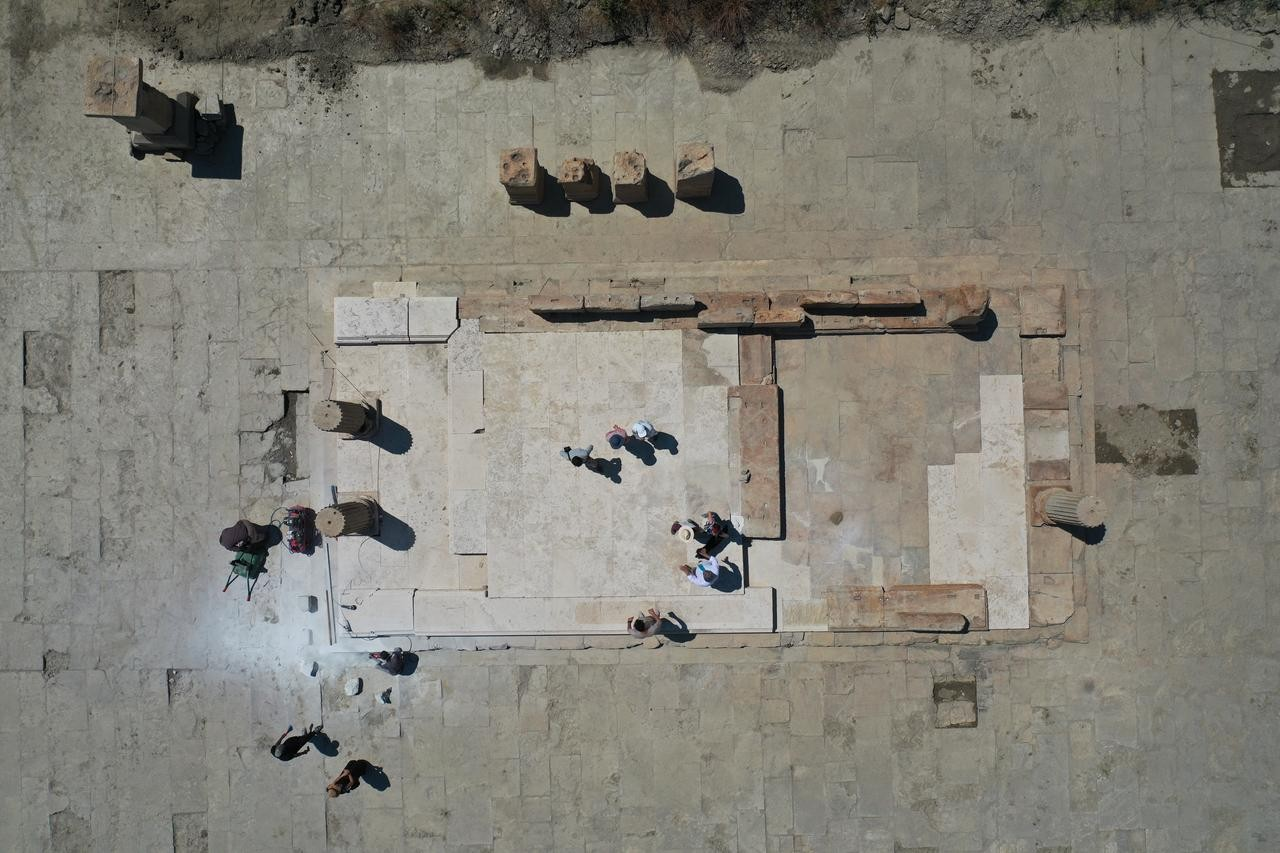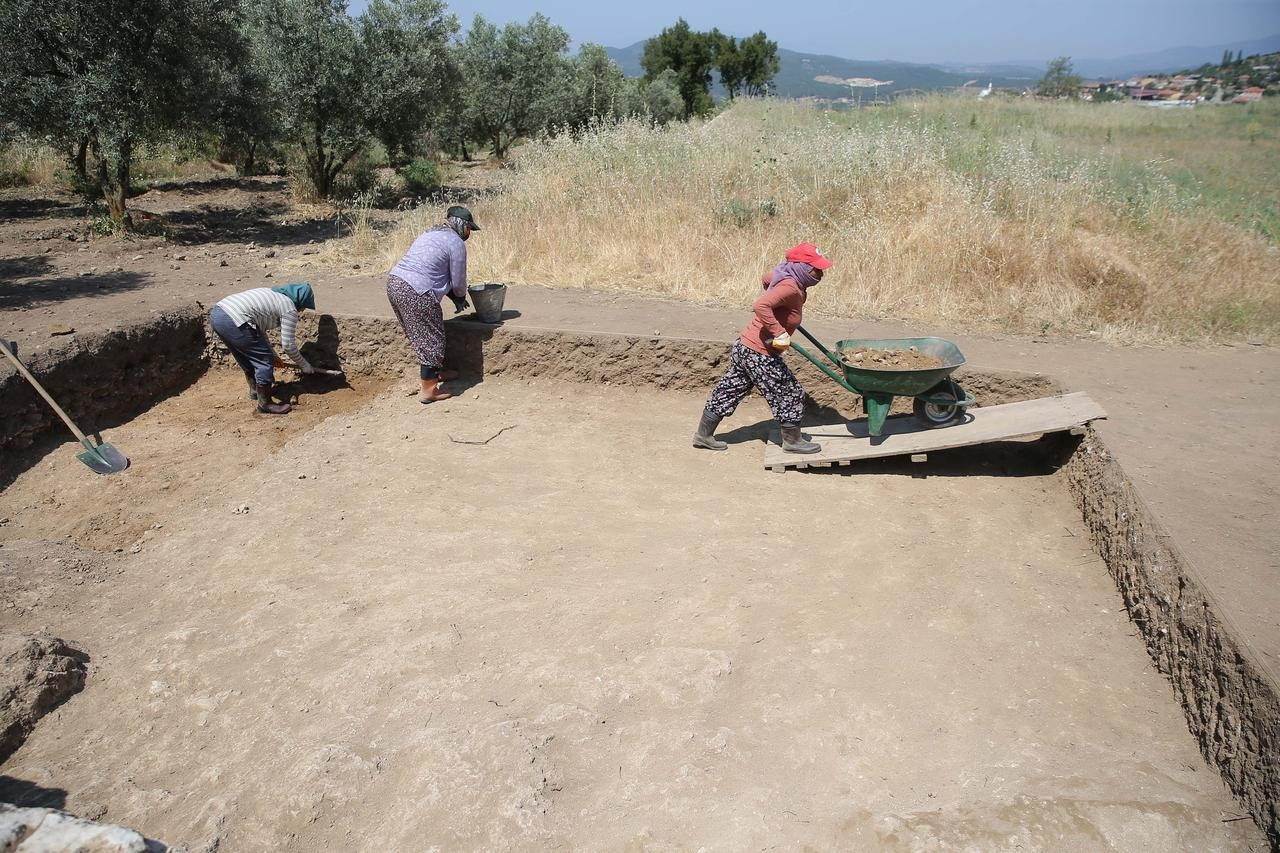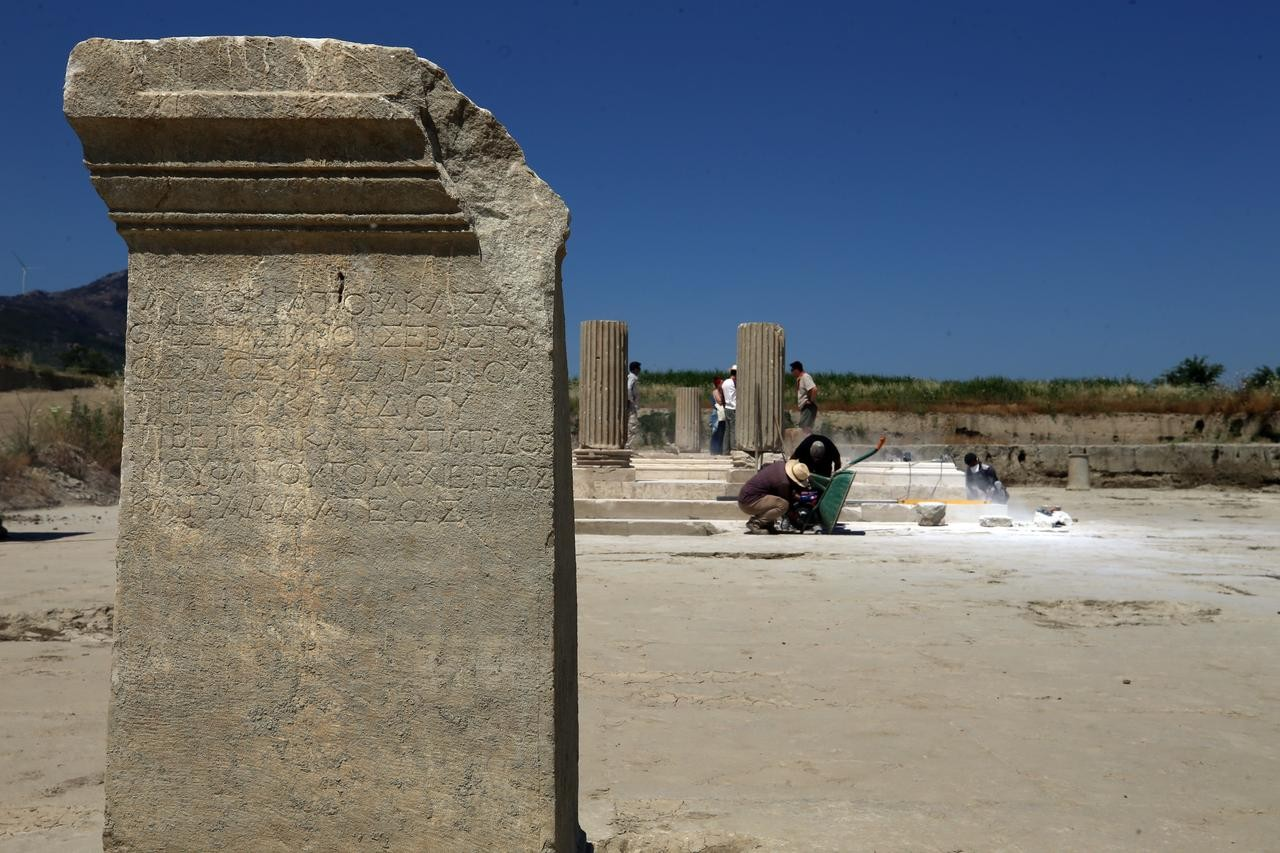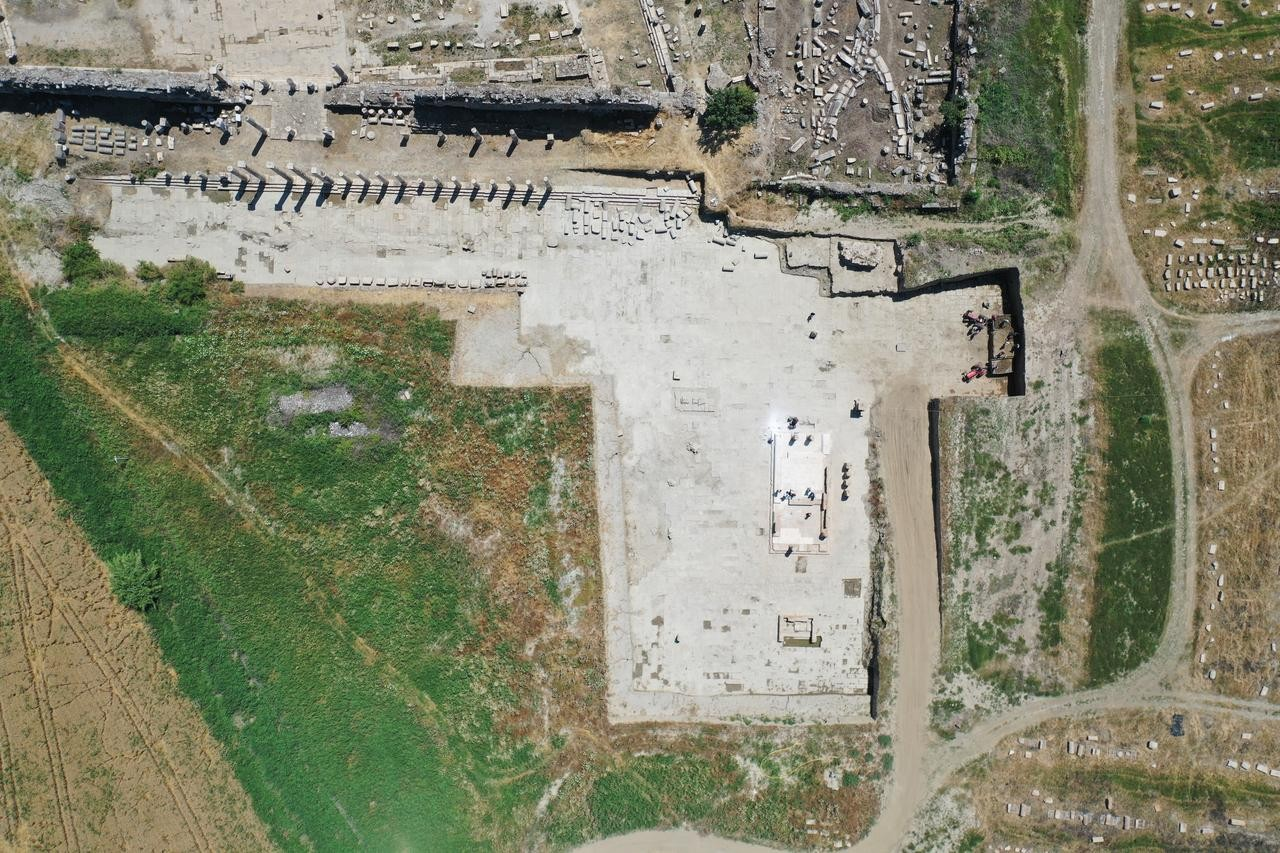Turkish archaeologists have unearthed a vast, beautifully preserved marble-paved square in the ancient city of Magnesia ad Maeandrum, revealing what is now confirmed as the largest known marketplace (agora) of the city—spanning a staggering 25,000 square meters.
An Ancient City at the Crossroads of Civilizations
Founded by settlers from Thessalian Magnesia and Crete in the 10th century BCE, Magnesia was strategically located near the cities of Priene, Ephesus, and Tralles, flourishing as one of the major urban centers in western Anatolia. Though geographically part of Ionia, its residents spoke the Aeolic dialect, a unique cultural blend that made Magnesia distinct.
Located near present-day Germencik in Turkey’s Aydın province, and nestled at the base of Mount Thorax near the Lethacus River (a tributary of the Maeander), the ancient city was also renowned for its fertile lands, which produced excellent wine and fruits.
A Monumental Agora Reemerges
The monumental agora, believed to be the city’s main civic and ceremonial center, was buried under nearly four meters of sediment due to ancient earthquakes and flooding from the Maeander River.
Despite this, excavations—ongoing since 2021—have revealed over 10,000 square meters of the site so far, including intact marble flooring and surrounding architectural elements in exceptional condition.
Leading the dig is Associate Professor Gorkem Kokdemir, of Ankara University’s Archaeology Department, under the auspices of Turkey’s Ministry of Culture and Tourism as part of the “Heritage for the Future” program.
“This is one of the most important discoveries in Western Anatolia,” Kokdemir told Anadolu Agency. “The agora's marble pavement has survived almost completely intact. It’s a remarkable preservation of ancient urban infrastructure.”
The Heart and Memory of the City
Contrary to a commercial marketplace as we understand it today, the ancient agora functioned as a civic core, where public memory, governance, and knowledge were preserved and transmitted.
“Imagine a place not centered around trade, but the very soul of the city,” Kokdemir emphasized. “This is where the community gathered, where decisions were made, and where the past was safeguarded for the future.”
The agora is surrounded on all four sides by colonnaded stoas and enclosed rooms, some of which are believed to have housed public archives.
Previous German-led excavations unearthed nearly 200 inscriptions from just two of these chambers—suggesting that the site could yield a wealth of historical records as excavations expand.
Next Steps and Cultural Significance
With approximately 15,000 square meters still buried, archaeologists plan to extend excavations toward the southern stoa, where more structures may lie hidden.
As work continues, the research team envisions the site as a future archaeological park, complete with visitor pathways and interpretive displays—bringing the once-forgotten civic heart of Magnesia back into public consciousness.
This rediscovery not only deepens our understanding of urban life in ancient Anatolia but also highlights Magnesia’s role as a beacon of Hellenistic architecture, civic planning, and cultural memory.










